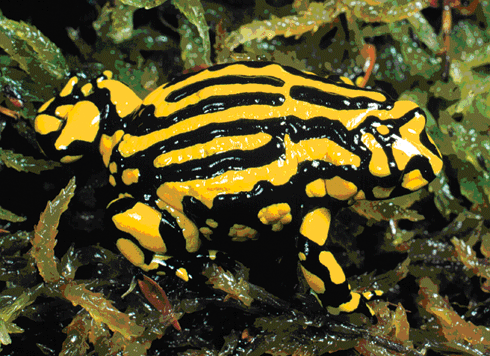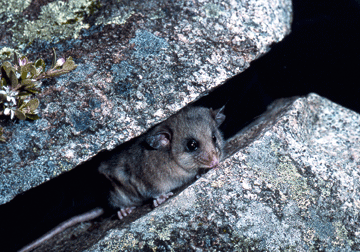
|
Published:
Protecting biodiversity in an uncertain climate
In 2009, a group of eight leading scientists – led by Professor Will Steffen of the ANU Climate Change Institute – warned in a report to the Australian Government that climate change presents a threat to our biodiversity ‘equivalent to those of the abrupt geological events that triggered the great waves of extinction in the past’.1 This special Focus highlights extracts from the report, now published as a book.2

|
|
Climate change is bringing new threats to Kakadu National Park, such as rising sea levels and saltwater intrusion into wetlands, invasive weeds and feral animals. Credit: ScienceImage
|
At the beginning of the 21st century, Australia’s biodiversity is under considerable pressure. Our continent’s rate of species extinctions is high in comparison with most other parts of the world, and many more species are on trajectories towards extinction. These changes in species diversity flow on to affect the structure and functioning of ecosystems in equally serious ways.
Although many are familiar with the historic record of change in Australia’s biodiversity (due to clearing and farming, grazing rangelands, introducing exotic animals and plants, redirecting water resources, using fertilisers and other chemicals, changing fire regimes, urbanisation, mining, and harvesting resources such as fish and wood), the fact that these changes continue to unfold is fundamental to this assessment.
The additional effects of climate change will exacerbate these current threats and cause unprecedented, additional stresses in their own right. Without an effective integration of knowledge about present stressors on biodiversity into climate change adaptation strategies and approaches, such efforts are virtually certain to fail.
Preparing for different scenarios
The Earth is warming rapidly – with human-driven increases in atmospheric greenhouse gas concentrations the primary cause – and climate change is likely to accelerate in the future.
Australia is currently experiencing climate change consistent with the global pattern: higher temperatures, altered patterns of precipitation, sea level rise, and changes in the magnitude and frequency of extreme events. Plants, animals and micro-organisms are already responding to climate change and will continue to do so.
In the longer term, biodiversity is much less able to adapt to these and other climate changes than human systems. Rising temperatures and greater extremes of temperature will significantly affect many species. Some are likely to become extinct.
Reduced rainfall in parts of the country is affecting many species through reduced surface freshwater availability and lowered groundwater tables. Extensive, high-intensity fires are becoming more common. Sea temperatures and ocean acidity will continue to increase – leading to increased coral bleaching, coral reef loss and other changes – while sea level rise and increased storm surges will affect coastal zones and low-lying islands.
The projected rate of temperature increase this century, if greenhouse gas emissions are not abated, far exceeds that experienced during the past several million years. The transition from the Last Glacial Maximum (around 20 000 years b.p.) to the present (Holocene) climate took over 5000 years, compared with a potential recent change of similar magnitude in only 100 years.
The degree to which Australia’s biodiversity will be affected by climate change will depend on the magnitude and rate of climate change that is actually realised this century and beyond, which in turn depends on the whether the world’s nations can collaborate effectively to rapidly reduce greenhouse gas emissions.
Three future climate scenarios are considered in this assessment: a runaway scenario, a stabilisation scenario and a recovery scenario.3 Each of these scenarios has distinct and different implications for biodiversity conservation.
Constructive and cost-effective adaptation approaches for vulnerable natural systems under a runaway climate scenario are not likely, and many extinctions and massive ecosystem change will result. A stabilisation scenario provides a focus for management actions to assist natural ecosystems adapt to some future, altered climate; however, the higher the level at which atmospheric greenhouse gas concentrations stabilise, the greater the change will be. Finally, a recovery scenario will require adaptation approaches that might be able to ‘nurse’ vulnerable systems through a period of increasing climate change, anticipating the prospect of better conditions at some future date, albeit centuries away.
Planning for decisions with long-term implications needs to accommodate these possible futures until there is increasing certainty about future emission levels and about the degree of climate change that will result.
However, for decisions with implications to 2050 only, the runaway scenario is the most appropriate to use for planning purposes, given current observations and the in-built momentum in the climate system.
Regardless of the level of commitments globally to mitigation and regardless of whether stabilisation or recovery becomes the global goal, Australian managers and policy-makers must prepare for a response time of centuries if substantial fractions of our biodiversity are to be conserved.
In addition, our knowledge base is highly focused on the species level and on climate change as an isolated stressor, as this reflects the current state of the science. The most important impacts of climate change on biodiversity, however, will undoubtedly be the indirect ones at the community and ecosystem levels, together with the interactive effects with existing stressors.
For example, warmer temperatures and declining snow cover in the Australian Alps are allowing greater numbers of introduced predators year-round at high elevations. This has many ecosystem-level effects and also threatens particular species such as the mountain pygmy-possum, which is restricted to only 6 km2 of the Alps, compounding other impacts of changing climate on the insulating snow cover and on post-hibernation food supplies.
For the wetlands of Kakadu National Park, the major threats of climate change are not only the direct impacts on vulnerable species, but are also due to an intersection of effects; in this case, due to changing fire regimes, rising sea levels and the resulting saltwater intrusion into freshwater wetlands, and the consequences of climate change for a suite of invasive weed and feral animal species.
Such indirect effects highlight the many difficult but important issues that managers and policy-makers face in dealing with the complex responses of our ecosystems to climate change – severe uncertainties, non-linearities, time lags, thresholds, feedbacks, rapid transformations, synergistic interactions and surprises. The current state of knowledge is not adequate for anything but the most general guidance on adaptation approaches.

|
|
The southern corroboree frog has been brought to the brink of extinction by chytrid fungus, aided by higher temperatures in alpine areas. Credit: Linda Broome
|
Adaptation, resilience and mitigation
Despite the lack of knowledge about system-level responses and the large uncertainties associated with the projections of future climate change, the situation is not hopeless. Concepts such as resilience and transformation provide positive, proactive avenues for reducing the vulnerability of biodiversity to climate change.
The emphasis is on making space and opportunities for ecosystems to self-adapt and reorganise, and on the maintenance of fundamental ecosystem processes that underpin vital ecosystem services.
But there is a limit above which biodiversity will become increasingly vulnerable to climate change even with the most effective adaptation measures possible. Global average temperature increases of 1.5 or 2.0°C above pre-industrial levels – and we are already committed to an increase of around 1.2 or 1.3°C – will likely lead to a massive loss of biodiversity worldwide.
Thus, the mitigation issue is central to biodiversity conservation under climate change. To avoid an inevitable wave of extinctions in the second half of the century, deep cuts in global greenhouse gas emissions are required by 2020 at the latest.
The more effectively the rate of climate change can be slowed and the sooner climate can be stabilised, the better are the prospects that biodiversity loss will be lessened.
More information: |
Australia’s Biodiversity and Climate Change, by Will Steffen et al. and published by CSIRO Publishing and the Australian Government, can be ordered at www.publish.csiro.au/nid/20/pid/6178.htm |
1 The Expert Advisory Group (EAG) comprised the Chair, Professor Will Steffen (Australian National University), Dr Andrew A Burbidge (WA Department of Environment and Conservation), Professor Lesley Hughes (Macquarie University), Professor Roger Kitching (Griffith University), Professor David Lindenmayer (ANU), Professor Warren Musgrave (University of New England), Dr Mark Stafford Smith (CSIRO Sustainable Ecosystems) and Professor Patricia A Werner (ANU).
2 Steffen, W et al. (2009) Australia’s Biodiversity and Climate Change. CSIRO Publishing, Melbourne.
3 The three main scenarios developed by the Intergovernmental Panel on Climate Change (IPCC) are ‘recovery’, which assumes that vigorous global mitigation efforts will succeed in limiting climate change to a temperature of 2°C or less, with a recovery towards a pre-industrial climate within 100–200 years; ‘stabilisation’, which assumes that the climate is eventually stabilised at 3–4°C higher than pre-industrial temperatures; and ‘runaway’, which assumes unmitigated climate change, with accelerating change through this century and a possible 5–6°C increase in global mean temperature by 2100.




